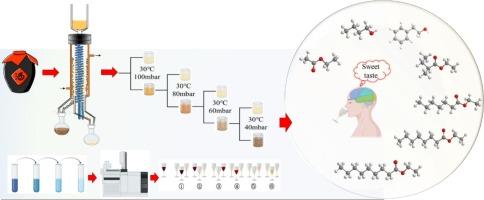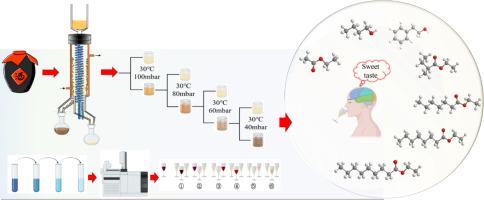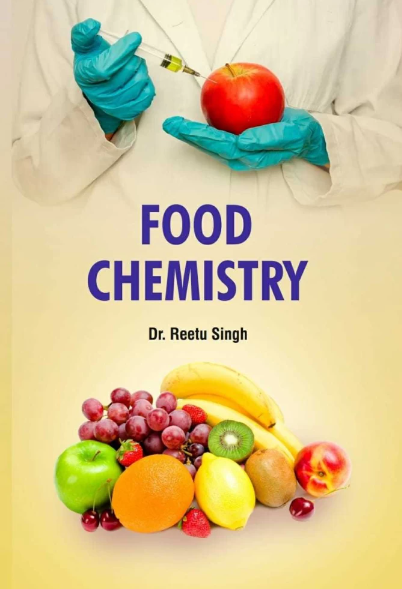通过分子蒸馏结合分子感官科学分离和表征白酒中的甜味化合物
IF 8.5
1区 农林科学
Q1 CHEMISTRY, APPLIED
引用次数: 0
摘要
甜味是白酒的重要口感成分。然而,对白酒甜味的全面研究仍然有限,传统的风味分析方法也不适合鉴定甜味化合物。为此,我们开发了一种多级分子蒸馏法,并结合分子感官科学,以更有效、更科学地分析白酒中的主要甜味化合物。样品和化合物的回收率分别为 93.8 % ~ 98.3 % 和 81.6 % ~ 118.3 %。通过气相色谱-质谱(GC-MS)结合味觉稀释分析(TDA),确定了 15 种味觉稀释因子(TD)值≥64 的重要化合物。通过计算它们的味觉活性值(TAV),确定了 10 种 TAV≥1 的初级甜味化合物。进一步的味觉重组和省略实验证实,己酸乙酯、庚酸乙酯、辛酸乙酯、2-甲基丁酸乙酯、1-丁醇、苯乙醇和乙酸乙酯对白酒的甜味有显著贡献,被确定为主要甜味化合物。本文章由计算机程序翻译,如有差异,请以英文原文为准。


Separation and characterization of sweet compounds in Baijiu by molecular distillation combined with molecular sensory science
Sweetness is a crucial taste component in Baijiu. However, comprehensive research on the sweetness of Baijiu remains limited, and traditional methods for flavor analysis are not well-suited for identifying the sweet compounds. To address this, a multi-stage molecular distillation method, combined with molecular sensory science, was developed to more effectively and scientifically analyze the key sweet compounds in Baijiu. The recovery rates of samples and compounds were 93.8 % ∼ 98.3 % and 81.6 % ∼ 118.3 %. 15 important compounds with a taste dilution factor (TD) value ≥64 were identified through gas chromatography–mass spectrometry (GC–MS) combined with taste dilution analysis (TDA). By calculating their taste activity values (TAV), 10 primary sweet compounds with TAV ≥1 were determined. Further taste recombination and omission experiments confirmed that ethyl hexanoate, ethyl heptanoate, ethyl octanoate, ethyl 2-methylbutyrate, 1-butanol, phenethyl alcohol, and ethyl acetate contribute significantly to Baijiu's sweetness and are identified as the key sweet compounds.
求助全文
通过发布文献求助,成功后即可免费获取论文全文。
去求助
来源期刊

Food Chemistry
工程技术-食品科技
CiteScore
16.30
自引率
10.20%
发文量
3130
审稿时长
122 days
期刊介绍:
Food Chemistry publishes original research papers dealing with the advancement of the chemistry and biochemistry of foods or the analytical methods/ approach used. All papers should focus on the novelty of the research carried out.
 求助内容:
求助内容: 应助结果提醒方式:
应助结果提醒方式:


